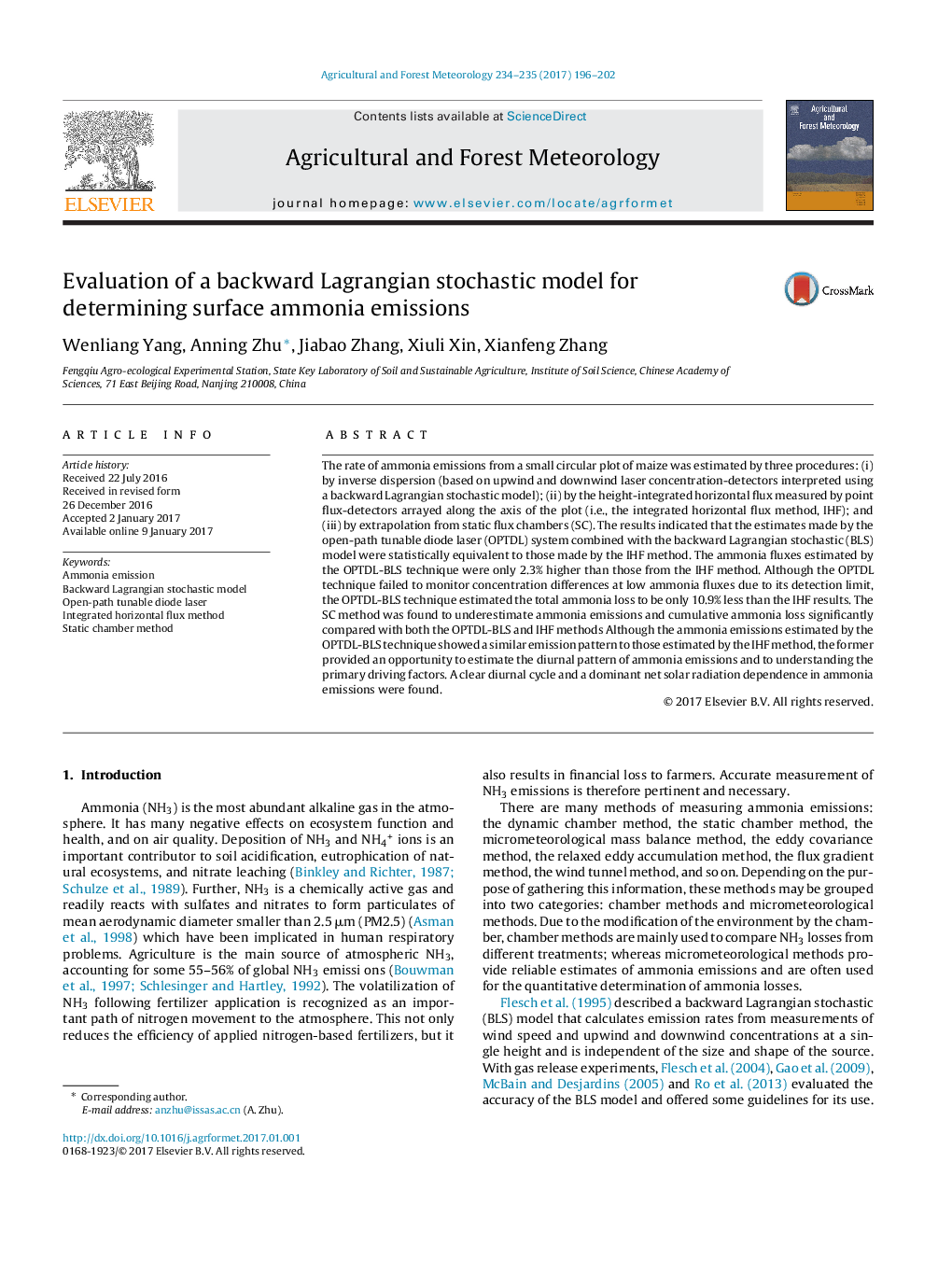| کد مقاله | کد نشریه | سال انتشار | مقاله انگلیسی | نسخه تمام متن |
|---|---|---|---|---|
| 6458002 | 1420863 | 2017 | 7 صفحه PDF | دانلود رایگان |
- An inverse dispersion model was assessed to monitor NH3 emission after fertilization.
- Backward Lagrangian stochastic (BLS) model was compared with two alternative methods.
- Results of the BLS model were similar to those of integrated horizontal flux method.
- The static chamber method underestimated NH3 flux and total NH3 loss significantly.
- A clear diurnal cycle and dominant solar radiation dependence in NH3 flux were found.
The rate of ammonia emissions from a small circular plot of maize was estimated by three procedures: (i) by inverse dispersion (based on upwind and downwind laser concentration-detectors interpreted using a backward Lagrangian stochastic model); (ii) by the height-integrated horizontal flux measured by point flux-detectors arrayed along the axis of the plot (i.e., the integrated horizontal flux method, IHF); and (iii) by extrapolation from static flux chambers (SC). The results indicated that the estimates made by the open-path tunable diode laser (OPTDL) system combined with the backward Lagrangian stochastic (BLS) model were statistically equivalent to those made by the IHF method. The ammonia fluxes estimated by the OPTDL-BLS technique were only 2.3% higher than those from the IHF method. Although the OPTDL technique failed to monitor concentration differences at low ammonia fluxes due to its detection limit, the OPTDL-BLS technique estimated the total ammonia loss to be only 10.9% less than the IHF results. The SC method was found to underestimate ammonia emissions and cumulative ammonia loss significantly compared with both the OPTDL-BLS and IHF methods Although the ammonia emissions estimated by the OPTDL-BLS technique showed a similar emission pattern to those estimated by the IHF method, the former provided an opportunity to estimate the diurnal pattern of ammonia emissions and to understanding the primary driving factors. A clear diurnal cycle and a dominant net solar radiation dependence in ammonia emissions were found.
Journal: Agricultural and Forest Meteorology - Volumes 234â235, 15 March 2017, Pages 196-202
